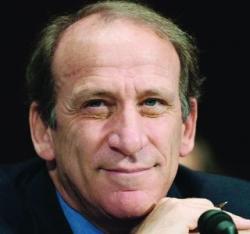Former Architect of National Broadband Plan Says That Every City Needs a Broadband Plan
September 14, 2015 – Every city should create a city-wide broadband plan of its own, said the former director of the National Broadband Plan, in wide-ranging speech touting four strategies useful for different types of city broadband plans. Speaking on Friday at the National Association of Telecomm
September 14, 2015 – Every city should create a city-wide broadband plan of its own, said the former director of the National Broadband Plan, in wide-ranging speech touting four strategies useful for different types of city broadband plans.
Speaking on Friday at the National Association of Telecommunications Officers and Officers annual conference in San Diego, Blair Levin of the Brookings Metropolitan Policy Program and the group Gig-U, said that every city should tackle four key strategies: (1) Getting fiber deeper into neighborhoods; (2) Using community WiFi; (3) Getting everyone online; and (4) Promoting innovative civic applications for broadband.Levin, the former architect of the Federal Communications Commission’s broadband plan, crafted from 2009 to 2010, said that the United States was about the 20th country to adopt such a plan for the deployment of high-speed internet. Nearly 150 countries have one now.“With cities, we’re where we were with countries in 2010. Several dozen have them,” Levin said. “But now, such a plan is becoming table stakes for any city that wants its residents to be part of the 21st Century Information Economy.”In his remarks, Levin addressed the pivotal role that Google Fiber has played in spurring the development of Gigabit Networks. Indeed, on Thursday, Google announced upcoming fiber-optic deployments in three new cities: Irvine, Calif., Louisville, Kentucky; and San Diego.He categories the types of cities, and they relative trajectories towards Gigabit Networks, as follows:“The first set of communities is those that either have or are likely to see Google Fiber enter. For these, the starting strategy is pretty simple. Accelerate to the extent possible, Google’s entry.” Whether or not Google comes, such cities will be well-situated for others, as well.Indeed, just days before Levin spoke, Gigi Sohn, counselor to FCC Chairman Tom Wheeler, encouraged cities not to wait for Google or other telecom providers: “Rather than wait for incumbent ISPs to build the network your cities want and need, you can take control of your own broadband futures,” she said.Levin’s “second set of communities are those that don’t fit the Google algorithm but are large, dense communities. These would include New York, Chicago, Boston, Baltimore, San Francisco and Los Angeles. These communities may not be able to attract Google and the competitive responses that always follow. But they have the scale, the staff and the demographics to create an attractive next generation investment case.”“The third set of communities are those smaller communities that may not attract a Google or have the scale to attract what L.A. has done, they still can attract private capital to accelerate next generation deployments.”Increasingly, there are a range of companies and players seek to fill these too-small-for-Google cities with an arrange of approaches — including public-private collaborations that will build Gigabit Networks.For Levin, “there is a fourth set of communities that are largely rural. They will not have any Gigabit Network unless the government funds it.”Whether you are in or representing any one of the four classes of communities about which Levin spoke, he urged cities to adopt the four tools, particularly getting fiber deeper into the communities.He did note that “there are lots of trade-offs. As our Gig.U handbook discusses, communities have to understand the trade-offs between, for example risk v. control, scale v. quick decision making, ROI for private capital v. universal coverage, among others.“Each community should understand and make the trade-offs that best serve their residents,” Levin said.He also addressed the importance of using civic resources for building WiFi deployments off such fiber networks, making concerted efforts to ameliorate the digital divide, and helping spur innovative application for civic usage.The full speech is available here at Benton.org web site.Drew Clark is the Chairman of the Broadband Breakfast Club. He tracks the development of Gigabit Networks, broadband usage, the universal service fund and wireless policy @BroadbandCensus. He is also Of Counsel with the firm of Best Best & Krieger LLP, with offices in California and Washington, DC. He works with cities, special districts and private companies on planning, financing and coordinating efforts of the many partners necessary to construct broadband infrastructure and deploy “Smart City” applications. You can find him on LinkedIN, Google+ and Twitter. The articles and posts on BroadbandBreakfast.com and affiliated social media are not legal advice or legal services, do not constitute the creation of an attorney-client privilege, and represent the views of their respective authors.









